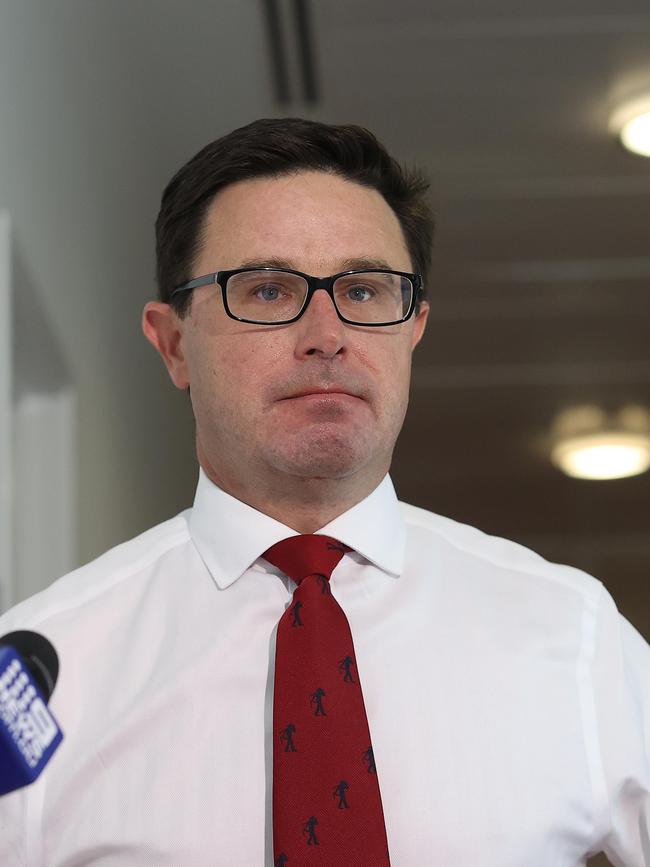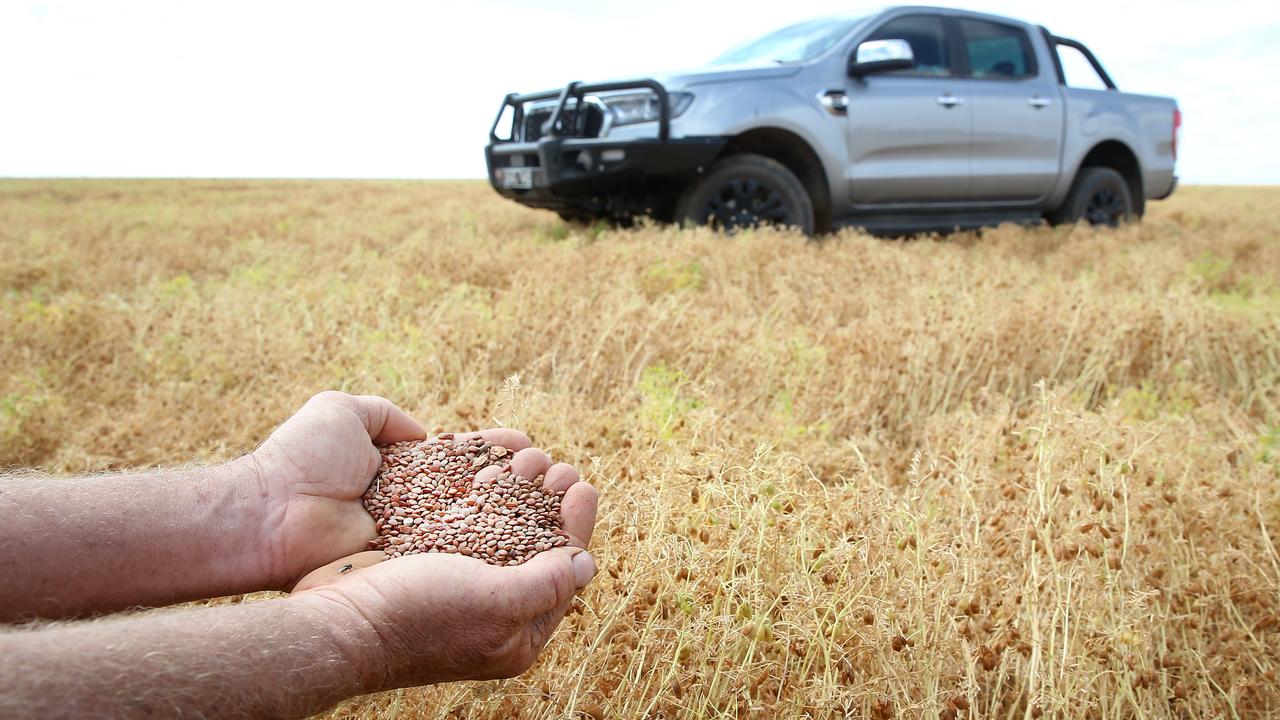How Russia Ukraine conflict may impact the Australian agriculture industry
A potential commodity glut on international markets may emerge as sanctions are imposed on Russia following its attack on Ukraine.
A potential commodity glut on international markets may emerge as sanctions are imposed on Russia following its attack on neighbouring Ukraine.
Australia exports hardly any meat or dairy to the Russian Federation, particularly since relations between Canberra and Moscow froze due to the Malaysian Airlines downing over eastern Ukraine in July 2014.
However, New Zealand continued to export produce to Russia despite the international outcry, with $240 million in NZ produce, mostly dairy, flowing to the superpower last year.
United Dairyfarmers of Victoria vice president Mark Billing said the formerly Russia-bound Kiwi produce would now need to find new ports of call.
“Of course the biggest concern is Ukraine itself and its people as well as the impact on the world economy,” he said.
“From a dairy perspective, Fonterra’s announcement this week that it will stop shipments to Russia leaves the question: Where does the product now go?
“While we don’t directly trade with Russia, indirect trade decisions do have flow-on effects to international pricing, so we’ll be keeping a close watch.
“That being said, the main levers for the dairy sector are well positioned — milk prices remain strong at the moment and the Australian dollar is in a good spot around the 70 US cent mark.”
A spokeswoman for Meat and Livestock Australia said the impact of the Russia-Ukraine conflict on Australia’s red meat sector was limited. Russia, Ukraine and adjacent Belarus are not export markets for Australian red meat, given they are serviced by neighbouring European and Asian nations.
South Australian Dairyfarmers Association president John Hunt said rising fuel costs and potential blocking of machinery parts also may emerge as problems for agriculture.
“It’s a terrible situation - not just for Ukraine but the world. Just as the economy was starting to pick up with the pandemic easing, this throws another spanner in the works,” he said.
“Rising fuel costs were already a problem; they’re at the highest point in many years. It appears the economic instability will push prices further and that will have an impact on farm margins.”
LITTLEPROUD:
Federal Agriculture Minister David Littleproud has warned farmers the biggest impact from Russia’s invasion of Ukraine is likely to be higher fertiliser prices.
In his first public statement on the potential fallout to Australian agriculture since the invasion began, Mr Littleproud said the uncertainty created by Russia’s actions didn’t bode well for farmers or international agricultural markets.
“I expect that the conflict could be felt both directly and indirectly through prices for commodities, energy and critical inputs including fertilisers,” he said.
“Russia is a major producer and exporter of fertilisers and the largest supplier of many fertilisers Australian farmers would be familiar with like urea, ammonium and nitrogen.
“While Australia doesn’t import significant quantities of these products from Russia, they are a major exporter globally and that is likely to mean farmers are going to continue to face some high prices for these inputs.
“We will be monitoring closely the impact of the conflict on our supply chains.”

WHEAT
Experts have predicted Australian wheat prices could rise as much as 15 per cent in response to Russia’s invasion of Ukraine.
Analysis by agribusiness banking specialist Rabobank shows global wheat prices have risen 21 per cent since February 1 this year and could rise another five to 10 per cent in the short term.
Price rises in Australia will be limited by this season’s bumper harvest, limits on our export capacity and the positive grains outlook for the coming 2022 Australian season.
But if a full-scale conflict occurs, local Kwinana Free-In-Store APW prices could rise from $367 a tonne currently to $425 a tonne in the near term, Rabobank has predicted.
If conflict continues all the way into July, when the Black Sea harvest starts, and sanctions on Russia are implemented, global prices could rise another 61 per cent from current levels, according to Rabobank.
In order for Australian wheat prices to more closely follow higher global prices, Australia would need to increase our export capacity, the bank said in its analysis.
FERTILISER
Fertiliser prices could reverse what has been a downward trajectory for some products in light of escalating tensions between Russia and Ukraine.
Thomas Elders Markets analyst Andrew Whitelaw said prices were likely to increase, but it was hard to predict by how much until the severity and duration of any sanctions against Russia was known.
“It’s really hard to put a number on it, but we just know that large volumes of fertiliser come out of that part of the world, and any sort of major conflict with what is effectively a superpower will have an impact on prices,” he said.
Russia is responsible for a large percentage of global fertiliser exports, in particular AN, NPK, and Ammonia-based fertilisers.
Market Morsel: Putin your orders for Russian fertilizer.https://t.co/lG1NNIeMEkpic.twitter.com/JFutFHjrI4
— Thomas Elder Markets (@TEMarkets) February 1, 2022
Earlier this month, Russia imposed a ban on the exports of ammonium nitrate for two months in order to keep volumes within the country to maintain supply for Russian farmers. The decision came after an earlier cap on exports put in place in late 2021.
The ban tightened global fertiliser supplies but its impact on Australian growers would depend on whether it was extended, Mr Whitelaw said when it was first imposed.
Fertiliser imports into Australia typically follow the same seasonal pattern each year, rising sharply in March before peaking in June before dropping back in September.
Urea imports into Australia have largely followed the typical seasonal patterns. pic.twitter.com/E10IIRCgrf
— Thomas Elder Markets (@TEMarkets) February 2, 2022
FUEL
With the price of diesel creeping ever closer to $2 a litre, the agriculture is bracing for increased transport costs, with the potential for customers at the checkout feeling the pinch.
And the ongoing fuel price rise could continue for the foreseeable future.
RACV put the average price of unleaded petrol at 182.8c/lt, with the average price of diesel across the state at 181c/lt.
Victorian Transport Association chief executive Peter Anderson said while fuel prices have “steadily increased” due to global inflationary pressures, growing tensions about conflict in Eastern Europe were contributing to recent lifts in price.
And the impact on Australia’s agriculture industry could result in higher costs for consumers.
“Higher crude oil costs are an immediate effect of Russia’s actions against Ukraine, which could translate into higher prices at the pump as conflict escalates,” Mr Anderson said.
“Transport operators servicing the agriculture sector can either wear the higher cost of diesel, or more likely factor it into their transport pricing, which will lead to higher consumer prices.”
With the potential for the price of oil to surge beyond $100 a barrel, the agricultural supply chain could feel the effects of the conflict at the bowser in coming months.
University of Melbourne Professor of economics David Byrne said prior to the Ukraine conflict, global oil supply was tight.
“And the reason for that is the global economy was recovering from the pandemic, people coming back online, and oil demand is growing,” Prof Byrne said.
Russia supplies about 12 per cent of the world’s oil supply, and about 70 per cent of its natural gas, Prof Byrne said.
“The worry is that (Russia) can pull back supply on oil and gas at a time when we’re already short on supply,” Prof Byrne said.
“Before the crisis in Ukraine, (the market) would not have bet on Russia cutting oil supply … now there’s some probability one of the biggest platers in the world is going to cut back on oil supply. That threat is very much in the fold. Eventually this will be showing up at the bowser.”
Other areas Australians may feel the pinch in coming weeks, according to Prof Byrne, is at the supermarket and when checking their electricity bills.
“Then you look at the macro economy … if you have a crisis where Russia are threatening to cut energy supply, food distribution is disrupted because of the war in Ukraine, then what happens is the consumer price index starts to go up.
“That’s when we see inflation.”




